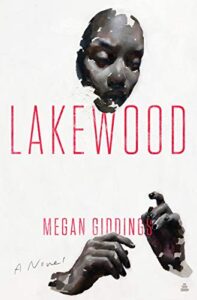( Bookshop.org | Amazon.com)
Lakewood by Megan Giddings
Amistad, 2020
ISBN-13 : 978-0062913197
Available: Hardcover, audiobook, Kindle edition
After her grandmother dies, college student Lena discovers her disabled, neurologically impaired mother is unable to pay her bills or afford the medication she needs to manage her disability. So when she is recruited for a research study on memory for a substantial sum of money she pushes her reservations to the side, signs an NDA and paperwork stating her agreement to any procedure the study may require, drops out of school, and tells her mother and friends she has a new, well-paid job in the small town of Lakewood as an employee at a warehouse. Bizarre psychological testing, vaccines, pills, induced isolation, and hallucinations become normalized as different test subjects come and go. Realizing that something must be very wrong, Lena attempts to question observers and participants in the study and to find information online, but is blocked at every turn, until finally she discovers that unethical government experimentation on Black people has historical precedent. Despite her unsettling findings, Lena continues to participate in the study so her mother can keep her health insurance and pay the bills.
Obviously inspired by the Tuskegee experiment and other research studies that exploited Black people in the United States, as well as the Flint water crisis, Lakewood carries that legacy forward into the present, through generations of trauma. Ir is timely in its exploration of scientific racism, the drastic actions family members will take to help ill and disabled family members afford healthcare, and government gaslighting and neglect of the study participants and their own health.
Told from Lena’s point of view, this history metamorphoses into a personalized, hallucinatory, and terrifying situation that will appall, disturb, and shock the reader as the layers peel away. Highly recommended.
Contains: body horror, mutilation, murder, gore, violence, medical experimentation







Follow Us!